Windows Phone 8.1 Review
by Anand Lal Shimpi on April 14, 2014 10:00 PM EST- Posted in
- Smartphones
- Microsoft
- Mobile
- windows phone
- Windows Phone 8.1
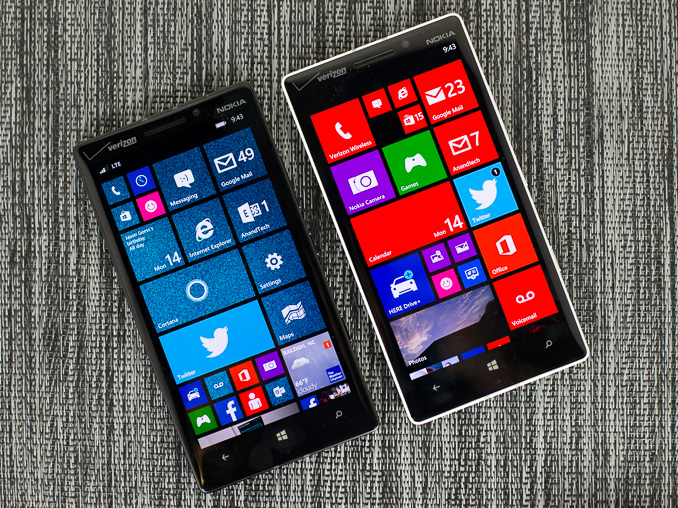
I was an early fan of Windows Phone 7. I remember completely switching over to the platform for about a month back in 2010, and being relatively happy. It wasn’t until I needed tethering support (which didn’t exist in the first release of WP7) that I had to move away. Unfortunately, Microsoft’s software and hardware update cadence for Windows Phone couldn’t pull me back.
In its first three years of existence, Windows Phone received roughly the same number of major updates as Android and iOS. From 2010 - 2013, Google took Android from Gingerbread to KitKat, Apple revved iOS from version 4 to 7, and Microsoft gave us Windows Phone 7, 7.5 and 8.0. At best, you can consider the software release cadence competitive. At worst, it’s not enough. Windows Phone started behind both Android and iOS. To come out ahead, Windows Phone updates had to be more substantive, more frequent or both.
The same could be said about hardware. Microsoft lagged behind Apple and Google to dual-core, 28/32nm silicon, higher resolution displays, and LTE support among other things. Although the situation has improved over the past year, if the goal is to take the #1 or #2 spot, the upgrade cadence needs to be more aggressive.
It always felt like the point of Windows Phone was to be a midpoint between the flexibility of Android and iOS’ guarantee of a certain level of user experience. The platform was born during a time when Android was not yet ready for the mainstream (Gingerbread) as an iOS alternative, and when it still looked like the Windows licensing model would work for handset OEMs.
Today the world is a different place. Android is far more mature than it was in 2010, and it’s polished enough where it can easily be a solution for the enthusiast as well as the first time smartphone user. While Microsoft’s strategy in 2010 might have been one of eyeing the crown, in 2014 the strategy is more humble and focused.
Improve the platform, address issues both little and big, and continue to grow. That’s the mantra these days and today we see it put in action with the arrival of Windows Phone 8.1, the fourth major release of the platform since its arrival in 2010.
I’ve spent the past few days using a Nokia Lumia Icon with the Windows Phone 8.1 developer preview (software available today). All devices capable of running Windows Phone 8 will be getting the 8.1 update for free over the next couple of months. Any new hardware vendors looking to ship Windows Phone 8.1 will be able to do so without paying Microsoft any licensing fees for the software itself.
Although the biggest change to Windows Phone 8.1 happens to be at the API level (including support for universal apps that can run on PCs, tablets and phones), there are a number of user facing feature enhancements that are worth talking about. Microsoft’s reviewer’s guide for Windows Phone 8.1 clocks in at 239 pages, so there’s no way I’ll be able to get to everything here, but I’ll go through several of the highlights.
Start Screen Updates
With the GDR3 update to Windows Phone 8, Microsoft added support for a third column of medium sized tiles on 1080p devices with a large display. With Windows Phone 8.1, that flexibility comes to all devices.
The third column is pretty nice, although admittedly the Lumia Icon I was testing WP8.1 on already had it thanks to the WP8.0 GDR3 update. You can use the third column to either have an insane amount of tiles on the display at once or keep everything nice and spread out. Windows Phone ends up covering the broadest spectrum of information density on its home screen as a result.
The other big change to the start screen is you can now set a photo as a background, instead of being limited to just white/black. With a photo as your background, your live tiles become transparent and allow your background to show through. Tiles that have a colored logo (e.g. Xbox Games, Facebook app) as well as any hub tiles (e.g. People) remain opaque. Despite going through three major revisions of the OS, Windows Phone hasn’t really changed much visually since its introduction in 2010. The ability to personalize the start screen goes a long way in making the UI more interesting.
The multitasking UI gets a slight update as well in WP8.1. You still tap and hold the back button to activate the UI, but you can now quit out of apps by swiping down on the app’s card.
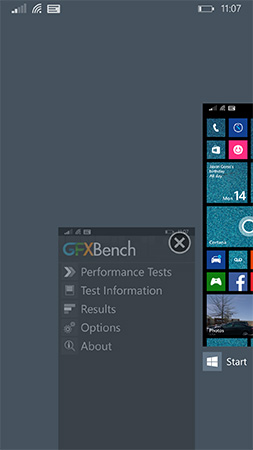
This is quite similar to what’s supported under iOS 7 (where it’s swipe up to quit). Unlike the iOS implementation however you can only swipe down one app at a time.
Revised System Specs
At the introduction of Windows Phone, Microsoft required that all OEMs have a physical camera button in addition to physical or capacitive buttons for back, home and search. It didn’t take long for Microsoft to remove the physical camera button requirement. With Windows Phone 8.1 the back/home/search buttons can be relocated on-screen, similar to what’s done on many Android handsets today. To accommodate those devices that inevitably ship without dedicated OS buttons, the screenshot button combination has changed from Power + Windows button to Power + Volume up.
The adjusted hardware requirements should make it easier for OEMs to take an existing Android hardware design and port it over to Windows Phone.
People Hub API, Disconnected Music+Videos Hub
When Windows Phone launched one of the major focal points was the People Hub, a single location for all of your contacts across all accounts/social networks. Previously you had to add accounts to Windows Phone in order for the People Hub to grab contacts from those accounts. With Windows Phone 8.1 Microsoft moves the People Hub from a push to a pull based service. If a 3rd party app supports it, all you need to do is login to the app itself and the People Hub will automatically pull in data from the app. Facebook is the best example of this as you no longer need to login to the Facebook app and then add your Facebook account separately to the People Hub. It’s a subtle change but one that echoes Microsoft’s new position on Windows Phone: rather than you conforming to Windows Phone, the OS should try and conform to you.
The other big hub change is the Music+Videos hub has been split up into two individual apps, each which can be updated independently of the OS.


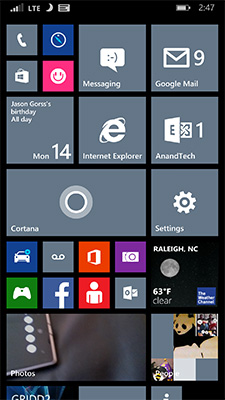
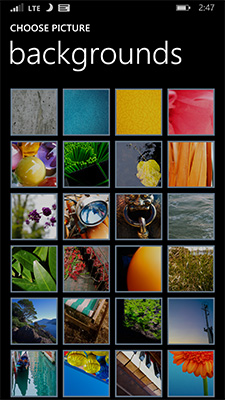
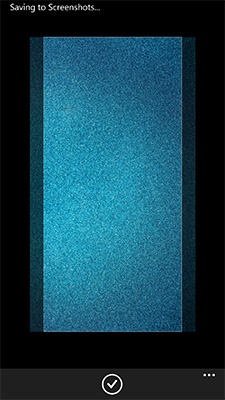
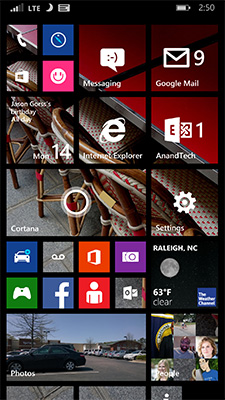
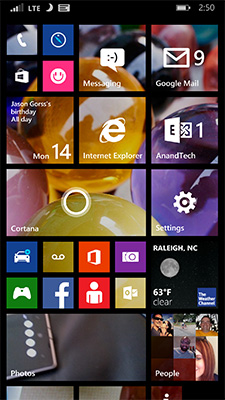
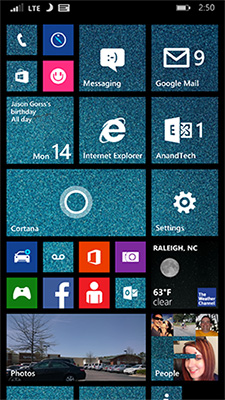
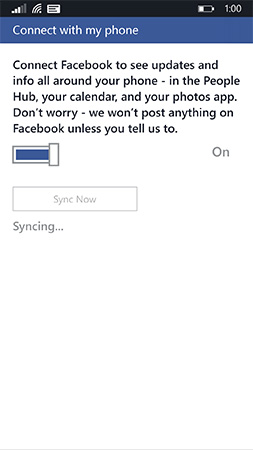








111 Comments
View All Comments
D1RTYD1Z619 - Monday, April 14, 2014 - link
Owning a Windows Phone, Windows Phone 8 to be exact, has been the worst purchase of my life. The OS is such a huge piece of crap with many features missing that are included in Android. I will never buy or recommend a Windows Phone ever again.Myrandex - Tuesday, April 15, 2014 - link
Sorry about your experience. My wife and I both own WP 8 devices and are quite satisfied with them. I have an Android tablet too and I don't really feel like I am missing out of too many features compared to it. I don't have a file explorer on my phone, but I haven't been itching for one frequently either (in either platform). I had an iPhone prior (it was my work phone) and I enjoy this much better. Plus the camera continues to amaze me.cditty - Tuesday, April 15, 2014 - link
I have a Lumia Icon which was a replacement for the M8 version of HTC's One. The camera on a phone is a big deal to me (I take tons of pictures of my daughter). The M8 was a sleek phone, but that camera just doesn't cut it.I took the plunge on the 8.1 developer update (since it's free and it's the RTM bits). I am extremely happy with this phone now. I would say at this stage, I prefer it to Android. The Nokia camera app is fantastic and I got to keep it with the developer update.
Microsoft is onto something with the cross device apps.
mebby - Friday, April 18, 2014 - link
I replaced my iPhone 4S with a Lumia 1520. I was hesitant about getting a WP phone but once WP8 came out and there were phones with faster processors, I took the plunge. Have to say I really enjoy the 1520 and find it very useful. The area that WP8 (now WP8.1) is deficient is the internet-of-things apps. Using apps with devices like Roku, Sonos, etc. is problematic. Seems like you have to wait or deal with 3rd party apps from hobby programmers. The rest of the apps are not really an issue for me.I like the interface on WP8 and the 8.1 update (once I installed the dev preview) is like having a new phone. And I love the large screen on the 1520 though during the hotter months it is a little troublesome carrying in my jeans/pants.
It is interesting - the 1st Android phones I looked at were a piece of crap. I vowed to never buy (or look at) again. Of course Android as an OS, and the hardware, have improved dramatically over the last 4 or so years. I would consider an Android (or iOS or WP) phone when I am looking for my next phone.
LarsBars - Tuesday, April 15, 2014 - link
I would sign up for the developer preview and give 8.1 a shot.StevoLincolnite - Tuesday, April 15, 2014 - link
I have a Lumia 920 with Windows Phone 8 black and I absolutely love it.Majority of features that *I* need are available and work great.
Windows Phone is more aligned to iOS in that it's simple and easy to use, whilst power users who love to tinker should really stick to Android where you can alter the OS far more.
Romberry - Tuesday, April 15, 2014 - link
Your comment tells me nothing. Really. "A huge piece of crap" is both utterly non-descriptive and a complete overstatement. WP8 (and now 8.1) may not be your cup O' tea, but it's far from "a huge pile of crap." I moved to WP8 after a short stint with a Lumia 520 that I picked up for 60 bucks, no contract. As soon as I had Lumia Black firmware on the thing, I made the decision to move up to a slightly higher spec'd model based on the very good experience from the 520, and now that I'm in and familar with WP8/8.1, no way would I go back to competing platforms. In the low and midrange especially, there's nothing that comes close. On the high end? Can't say because I don't have a high end phone. But WP8/8.1 works very well even on that Lumia 520. Contrast and compare that to the experience of iOS users with previous gen hardware, and Android users on more platforms than I can count that never will get an update.Sorry that WP8 wasn't for you, but crap it is not.
darkich - Tuesday, April 15, 2014 - link
It was an absolute crap for me too.Used Lumia 800 as a backup for my Galaxy S3, for 3 months.
And even those short sessions with it, (while my S3 was charging over a half broken charger that i couldn't replace at a time) triggered an anxiety like sensation in me..a lifeless, horribly restricted UI, terrible browser and multitasking..not to mention the apps and..well, in my experience almost EVERYTHING about it was unbelievably inferior compared to the GS3..even the speed and stability of WP was revealed as nothing more than a myth.
Yeah it worked decently but not at all better than Android!
tiupapa - Tuesday, April 15, 2014 - link
Dude, the Windows phone 7 era was an absolute crap! Believe me, but as I got a lumia 520, at first I thought it was gonna be lumia 800 over again. . But I was wrong, the lumia 520, works 5x better than the former flagship, it was a huge gain for me that i just used my s2, just for playing games. But as a phone, and as a browser, i feel more at home with a windows phoneSivar - Tuesday, April 15, 2014 - link
It's funny, I had the opposite experience. The only electronics device I've ever despised more than the Galaxy S 3 is the Galaxy S. Samsung's hardware quality, QA, and attention to detail never fails to amaze me. The GS didn't even have a working GPS!Awkwardly placed options, random and extreme battery drain (sometimes 10+%/hr), and flakiness after a few days of power-on time that reminds me of Windows in the 90's (and this is Linux!).
Unusually delicate glass, random unexplained app deaths without error message, complete inability to disable the "low battery" warning even if it's 3AM, odd difficulty in using Gmail contacts as phone contacts. The entire thing feels like a beta.
My wife's Windows Phone, which cost quite a bit less, works absolutely flawlessly every time. Smooth animation, apps don't randomely die, battery life is excellent (though one can't reasonably compare dissimilar devices), and every app I looked for was in the store, even unusual ones like Chess By Post.
I am curious as to what, specifically, made you feel so constrained in Windows Phone.